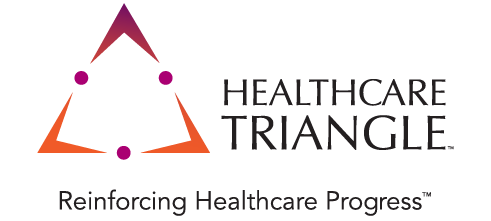Ready to Comply with New Information Blocking Rules?
Healthcare Triangle
Jul 30, 2020

In March 2020, CMS and ONC released the
21st Century Cures Act Final Rule. Even with COVID related enforcement delays compliance is mandatory, in part, beginning November 2, 2020.
The new rules direct that Medicare eligible providers must adopt standardized application programming interfaces (APIs), which will help allow individuals to securely and easily access structured electronic health information using smartphone applications. They also require that patients can electronically access all their electronic health information (EHI), structured and/or unstructured, at no cost.
Provisions also bar providers from using practices likely to interfere with, prevent or materially discourage access, exchange or use of electronic health information. Implementing APIs and updating a few new data elements to be available on the patient portal may not be sufficient to align with the rule.
The Basics
To be compliant with information blocking rules, any eligible provider should:
- Allow a patient to initiate sharing or linking of their information with third party applications. This requires your EHR to be updated to be compatible with HL7 Fast Healthcare Interoperability Resources (FHIR) Release 4.
- Ensure a patient can access or share with their party applications via FHIR all data elements that are part of the USCDI standard . This will include allowing open notes.
- Ensure you have enabled the EHR to allow for electronic release of information including allowing a patient to download and share their own medical records.
- Ensure you have a way for patients to electronically authorize sharing of information.
Driving Patient Engagement
The intent of the 21st Century Cures Act Final Rule is to help patients engage in their healthcare. Your organization can also benefit from this improved patient experience and should take other steps to improve information sharing with patients, such as:
- Provide an online method for a patient to request a release of electronic health information or for information to be shared electronically on behalf of a patient with a third party.
- Shorten the time for release of normal results to 24 hours or less and removing any other time-based holds on releases of information.
- Ensure scanned documents are available to a patient electronically. You may not even realize it, but there is a lot of data stored in your EHR that is not discreet or interoperable. If you do not have scanned documents visible to patients, you could be inadvertently blocking a lot of their record.
Innovation Opportunities
Progressive healthcare providers know that there are opportunities to innovate as they enable patients to access and share their own health information, improving patient experience and satisfaction while also enabling continuity of care and value-based care. To get the most out of patient engagement with their health information, consider:
- Other optimizations to HIM, Patient Access, and Patient Portal related workflows. These can improve patients utilization of the tools you offer for accessing electronic health information and minimize risk that a provider organization fails to respond to requests for release of electronic health information or be perceived to be blocking the release of electronic health information.
- Enable sharing and release of all data elements beyond that USCDI standard that are functionally available in your EHR. If the patient can get the information through a cumbersome, paper-based request process, stopping them from getting in electronically is a dissatisfier and adds manual work for you.
- Establish a patient contact center or customer service structures and processes to assist patients in obtaining and sharing their health information electronically. This likely involves IT resources as well.
- Pursue PACS and EHR diagnostic image exchange opportunities.
Healthcare Triangle, Inc. can quickly ensure your compliance with the new rule and collaborate to develop and implement forward-thinking patient engagement, data sharing, and interoperability programs.
For further discussion or immediate healthcare project-related assistance, drop an email to info@healthcaretriangle.com or schedule a consultation.
Healthcare Triangle, Inc. makes no representation or assurance that implementation of the above suggested healthcare information technology tools or functionality guarantees compliance with CMS, ONC, or other regulatory requirements. Regulation often requires changes to business process in addition to technology. You are advised to consult your own legal and compliance experts regarding new regulatory requirements. General Legal Guidance and Exceptions. .


